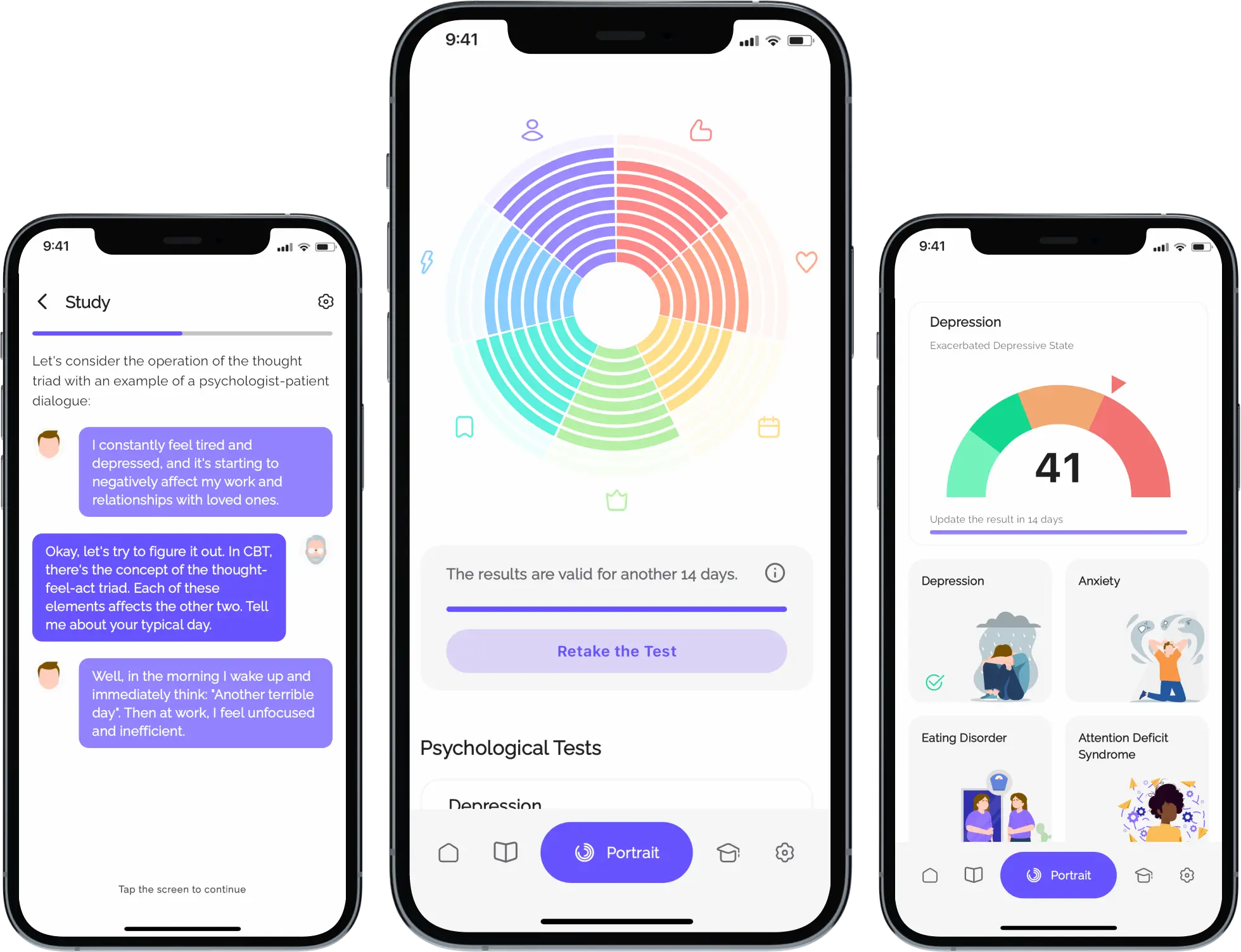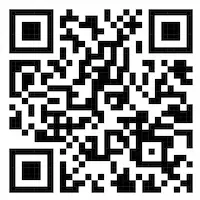
Let’s break down the core principle of cognitive-behavioral therapy—the connection between thoughts, emotions, and our reactions.
Imagine a triangle where each corner represents thoughts, feelings, and behavior.
These three elements don’t just coexist; they actively interact, influencing one another in an endless dance of human psychology.
Our thoughts are what we tell ourselves.
They shape our perception of the world, like glasses with different lenses.
Emotions are reactions to our thoughts.
Joy, sadness, fear, anger—these are all signals about how we perceive a situation.
More content in our app
You're only seeing a portion of the content. In the app, you'll find numerous interactive articles. Additionally, there are psychological tests to track your mood dynamics, a daily planner, an automatic thought journal, and much more!

Our behavior is the result of the interaction between thoughts and emotions.
It’s how we respond to the world, our actions.
Let’s not forget about the body!
It also plays an active role in this process.
Our thoughts and emotions trigger physiological reactions: increased heart rate, sweating, muscle tension (in anxiety), smiling, laughter (in joy).
We often believe that emotions arise directly from events.
The car breaks down—we get angry.
We lose our wallet—we feel upset.
But CBT suggests that, in reality, there is an intermediary between the event and the emotion—our thoughts about the event.
It is our interpretation of the event, not the event itself, that determines how we feel.
To see how this triad works, let’s look at an example: Imagine you’re walking down the street and see your ex-partner who left you.
Thought: He looks happy, and I am a failure.
Emotion: Sadness, resentment, anger.
Physical reaction: Shoulder tension, increased heart rate.
Behavior: You start crying and then turn away to avoid encountering them.
Another example:
Situation: Friends invite you to a party.
Thought: I won’t fit in; no one will accept me.
Emotion: Anxiety, fear.
Physical reaction: A heavy feeling in the stomach, sweaty palms, a lump in the throat.
Behavior: You decide not to go to the party and stay home.
See how a single thought triggered a chain reaction?
This also works for positive events.
Situation: You get a promotion at work.
Thought: I did a great job; my work is appreciated.
Emotion: Joy, pride.
Behavior: You smile broadly, call your friends to share the good news.
Problems arise when we get stuck in a negative cycle.
One negative thought triggers a series of unpleasant emotions and ineffective behaviors, reinforcing that thought and making it even stronger.
It’s like a snowball rolling down a hill, growing bigger and bigger.
But there is definitely a way out, and CBT is precisely about that.
Let’s take a look at a dialogue between a client and a psychologist to see this triad in action:
By working on your thoughts, we can change your emotions and behavior.
We will learn to identify negative thoughts, test their accuracy, and replace them with more adaptive ones.
This will help you break the cycle of negativity and feel better.
This is how the basic model works; of course, individual psychological traits can be added to it.
A person with an eating disorder might constantly think about their body and blame themselves for eating a piece of cake.
A neurotic person might spend hours worrying about a catastrophic event in the future, even if the likelihood of it happening is minimal.
Don’t be discouraged if you recognize yourself in these examples!
CBT was created precisely to help us replace destructive thoughts and reactions with healthier, more adaptive ones.
Next, we’ll discuss in more detail how to break these vicious cycles and regain control over your life.
It’s important to remember that each of us has the ability to change our inner dialogue and respond to the world in a more constructive way.







